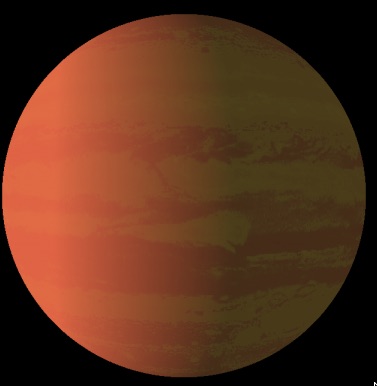COROT-exo-3b fits into the category of a failed star known as a brown dwarf, but the team that made the discovery has not ruled out the possibility that it is a planet. Brown dwarfs are failed stars. They burn lithium but are not massive enough to generate the thermonuclear fusion of hydrogen and helium that powers real stars. Planets do none of that.
The object has a mass 20 times greater than that of Jupiter but is roughly the same size. It falls outside the range of planets and stars discovered to date, with the largest planets having 12-Jupiter-mass and the smallest stars 70-Jupiter-mass.
If astronomers confirm the object as a planet, it would weigh in as the most massive and densest planet found so far. A full study will be detailed in the journal Astronomy and Astrophysics.
“COROT-exo-3b might turn out to be a rare object found by sheer luck”, said Francois Bouchy, an astronomer at the Institut d’Astrophysique in Paris. “But it might just be a member of a new-found family of very massive planets that encircle stars more massive than our sun. We’re now beginning to think that the more massive the star, the more massive the planet.”
The host star CoRoT 3 has an apparent magnitude of 13.3, with an absolute magnitude of 4.14. It is 1.41 times more massive and 1.44 times bigger compared with our sun. The surface temperature is 6558 K with its spectral type of F3V. In this planetary system, the extrasolar planet CoRoT 3 b orbits around the star CoRoT 3 with its orbital distance of 0.0570.
Paper:
https://www.aanda.org/10.1051/0004-6361:200810625
Journal Articles:
1.) The Rossiter-McLaughlin effect of CoRoT-3b and HD 189733b
3.) CoRoT’s first seven planets: An overview
WEB Articles:



